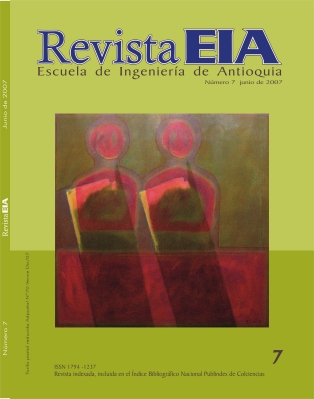MODÉLISATION CONCEPTUELLE D’UNE UNITÉ DE FABRICATION MICROÉLECTRONIQUE
MODÉLISATION CONCEPTUELLE D’UNE UNITÉ DE FABRICATION MICROÉLECTRONIQUE


This work is licensed under a Creative Commons Attribution-NonCommercial-NoDerivatives 4.0 International License.
Copyright statement
The authors exclusively assign to the Universidad EIA, with the power to assign to third parties, all the exploitation rights that derive from the works that are accepted for publication in the Revista EIA, as well as in any product derived from it and, in in particular, those of reproduction, distribution, public communication (including interactive making available) and transformation (including adaptation, modification and, where appropriate, translation), for all types of exploitation (by way of example and not limitation : in paper, electronic, online, computer or audiovisual format, as well as in any other format, even for promotional or advertising purposes and / or for the production of derivative products), for a worldwide territorial scope and for the entire duration of the rights provided for in the current published text of the Intellectual Property Law. This assignment will be made by the authors without the right to any type of remuneration or compensation.
Consequently, the author may not publish or disseminate the works that are selected for publication in the Revista EIA, neither totally nor partially, nor authorize their publication to third parties, without the prior express authorization, requested and granted in writing, from the Univeridad EIA.
Show authors biography
La modélisation des systèmes de production est difficile en raison du nombre et de la diversité des paramètres à prendre en compte et de la complexité des relations entre ces paramètres. Dans cet article, nous nous intéressons à l’étude d’une unité complètement automatisée de fabrication de wafers semi-conducteurs (fab). Dans la littérature, leur analyse est très souvent réalisée en utilisant des modèles de simulation à événements discrets, mais ces travaux ne présentent pas une véritable conceptualisation du modèle utilisé. L’objectif de cet article est de conceptualiser, à travers des méthodologies formelles, tous les composants d’une unité de production microélectronique: au niveau macro, le système physique de production et son système de supervision, ainsi que, au niveau micro, le processus de fabrication. Ces approches nous aideront à identifier les objets du modèle et leurs interactions permettant ensuite de développer un programme de simulation pour l’analyser du fonctionnement dynamique du system.
Resumen: La modelación de los sistemas de producción es una tarea difícil debido al número y diversidad de variables que deben tenerse en cuenta y a la complejidad de las relaciones entre dichas variables. En este artículo, nos interesamos en el estudio de una unidad completamente automatizada para la fabricación de “wafers” semiconductores (llamada “fab”). En la literatura, el análisis se realiza comúnmente empleando modelos de simulación de eventos discretos, pero esos trabajos no presentan una verdadera conceptualización del modelo empleado. El objetivo de este artículo es conceptualizar, por medio de metodologías formales de modelación, todos los componentes de una planta de fabricación microelectrónica: en el nivel macro, el sistema físico de producción y su sistema de control, así como, en el nivel micro, el proceso de fabricación. Estos enfoques nos ayudarán a identificar los objetos del modelo y sus interacciones para permitir así el desarrollo de un programa de simulación para analizar el funcionamiento dinámico del sistema.
Article visits 252 | PDF visits 133
